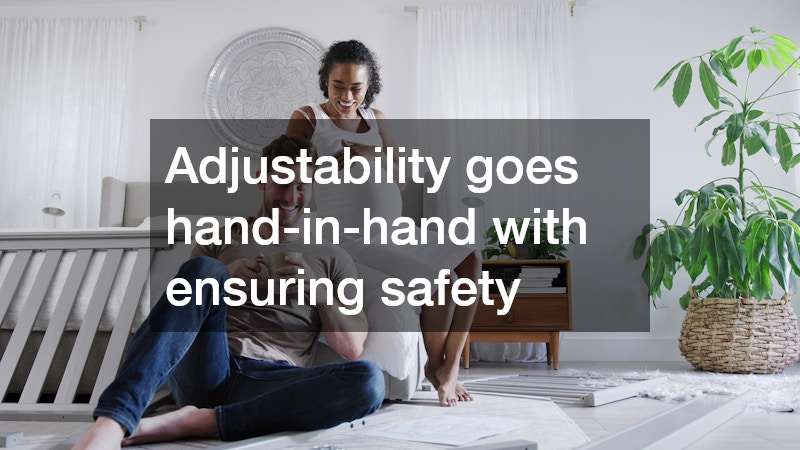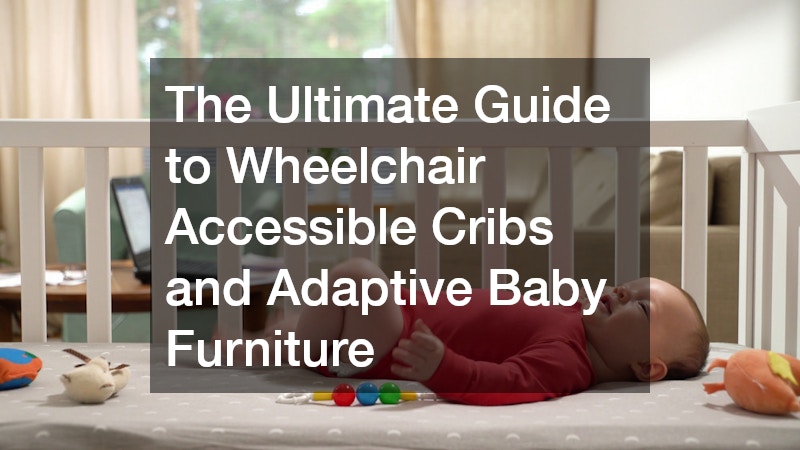The path to parenthood can present unique challenges for individuals with mobility limitations, yet the innovations in adaptive baby furniture provide an inclusive solution. By accommodating the needs of wheelchair users, these specialized furnishings help create a nurturing environment that prioritizes safety and convenience. Wheelchair accessible cribs not only uplift parents but also ensure that children grow in environments that cater to both their needs and the unique requirements of their guardians.
What Features Should You Look for in Wheelchair Accessible Cribs?
Height-adjustable cribs can enhance accessibility significantly for wheelchair users. With the ability to raise and lower the crib as necessary, these designs eliminate the need for overreaching and bending, minimizing physical strain.
Optimizing crib height ensures a seamless blend of convenience and caregiver peace of mind.
Adjustability goes hand-in-hand with ensuring safety, as it allows parents to set the crib at a comfortable level that avoids the potential for accidents. Innovative mechanisms are now available that allow smooth, effortless adjustment without compromising the sturdiness of the crib. This adaptability supports seamless transitions from play-mode to bedtime, ensuring an all-around practical parenting experience.
Customizable height settings are particularly advantageous for families with multiple users of varying mobility levels. By focusing on user-friendly designs, these cribs help create an inclusive space where everyone can participate in caregiving activities. The assurance of flexibility often matches or exceeds national safety guidelines, providing peace of mind for conscientious parents.
The drop-side mechanism remains a staple of accessible crib design, offering parents an easy solution to overcome reach barriers. While traditional drop-side cribs faced scrutiny, modern engineering advocates for robust safety enhancements. These include one-handed latching systems and quiet drop mechanisms that adhere to stringent safety certifications.
This feature streamlines the process of attending to a child’s needs, especially during nocturnal awakenings and diaper changes. With recent developments, drop-side cribs have regained trust in the market by focusing on reliability and effectiveness without compromising child safety. When combined with vigilant use and regular maintenance checks, these cribs offer an ideal solution for accessible parenting.
In an era prioritizing safety, adaptive drop-side cribs offer reassurance through rigorous testing and approval from accredited institutions. Parents are encouraged to engage in informed purchasing decisions, benefiting from resources that highlight compliant and effective choices. The drop-side option eliminates barriers, bringing routine care within easy reach while aligning with mandatory safety standards.
How to Choose Adaptive Baby Furniture Beyond the Crib
Adaptive changing tables are designed with accessibility at their core, leveraging mobility-friendly elements to simplify routine tasks. These tables often come with adjustable heights, ensuring a comfortable working level for every user. Durable construction ensures stability, which is critical when accommodating the added mechanics of adjustable features.
Many of these tables are equipped with lockable casters, promoting ease of movement and ensuring that the table stays firmly in place during use. Removable storage compartments or built-in shelving allow all necessary items to be within arm’s reach, eliminating unnecessary strain or difficult reaching. These designs adapt seamlessly to users’ needs, enhancing everyday functionality.
Occupying a central role in daily childcare routines, adaptive tables are an essential component of inclusive baby furniture. Offering ample functionality and support, these tables encourage independence and confidence in parents with mobility challenges. Investing in an adaptive changing table is investing in a product designed to make tasks manageable and predictable.
Feeding time can be made easier and more enjoyable with the right adaptive seating solutions tailored to mobility challenges. High chairs with height adjustability and swivel features enhance access and ease of use for parents using wheelchairs. Child-friendly materials and safety-certified restraint systems are essential aspects of these chairs, ensuring practicality without compromising safety standards.
Many adaptive high chairs can tilt, recline, and pivot according to user requirements, supporting flexible seating arrangements which cater to an individual’s needs. Comfortable padding and easily detachable parts offer convenience in cleaning and maintenance. These features combined result in a high chair that values both print practicality and the importance of making mealtime inclusive and enjoyable.
Where Can You Find Wheelchair Accessible Cribs and Adaptive Baby Furniture?
Numerous online retailers have recognized the emerging demand for adaptive baby furniture and offer a wealth of options. Websites like Wayfair, Amazon, and Overstock provide platforms rich with product details and user reviews. These avenues make comparison shopping effortless, allowing parents to make informed choices from the comfort of their homes.
These platforms often categorize products by accessibility features, enabling users to filter by height adjustability, materials, and other specifications essential to their needs. The direct shipping options offered by these retailers simplify the acquisition process, delivering selections promptly to your doorstep. Cost considerations and frequent discount promotions further extend accessibility to broader audiences.
Venturing into online deliveries offers visually represented, detailed configurations that support parental decision-making processes. Engaging with virtual customer service tools offers real-time assistance, guiding users through vast selections with educational support. These retailers continue to build upon the accessibility framework by integrating user-centric options into their product listings.
Physical retail environments provide distinctive experiences, enabling hands-on interactions with adaptive furniture. Specialty stores like BuyBuy Baby and Lovevery have embraced inclusivity, offering signature pieces designed for accessibility. These spaces enable customers to thoroughly inspect product features and solicit assistance from knowledgeable staff.
While browsing these curated environments, patrons gain practical insights into how various adaptive designs might integrate into their home settings. Frequent product demonstrations at these locations afford individuals unique perspectives into functionality, offering reassurance and inspiration. Moreover, engaging with consultants on-site can further enhance understanding and alignment of product choices with mobility needs.
Adaptive baby furniture plays a pivotal role in the lives of parents and guardians with mobility challenges, enhancing accessibility, safety, and convenience. Height-adjustable and drop-side cribs remove barriers, while adaptive changing tables, feeding chairs, and customized storage options extend these benefits throughout the nursery environment. By choosing accessible furniture, families empower themselves to engage more effortlessly and safely in daily parenting activities, reinforcing positive, inclusive parenting experiences.

